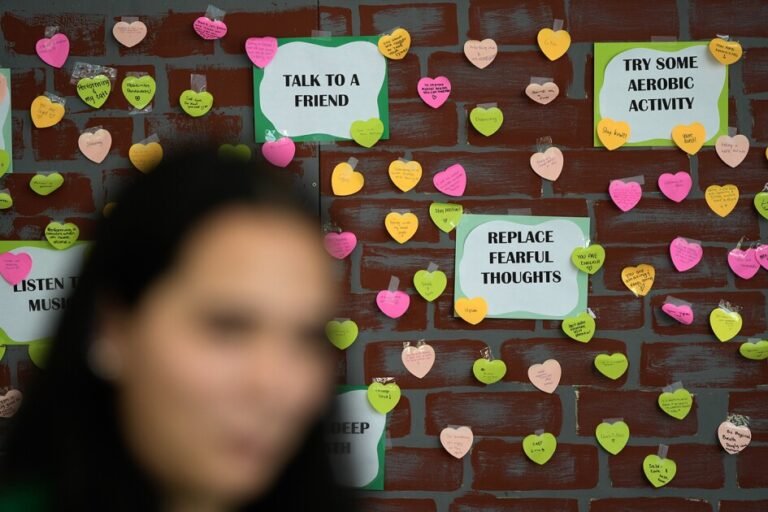In classrooms with multiple students struggling with anxiety, depression, and trauma, the people most in need of mental health support may be the teachers themselves.
Experts say teachers who face their own unresolved stress and compassion fatigue are less able to manage high-needs classes and are at greater risk of engaging in exclusionary discipline and burning out.
One promising model expanding in Chicago aims to train teachers to handle their own stress while supporting students with mental health issues in their classrooms: A three-year evaluation of the Connect 2 Kids program suggests that helping teachers understand their interactions with students can improve student behavior and reduce teacher stress.
The Chicago Juvenile Protection Association, the nonprofit community mental health organization that developed C2K, has been providing school-based therapy to students at 18 schools on Chicago’s South and West sides for more than a decade. But as student mental health needs exploded in the wake of the pandemic-related school closures, the focus has expanded to teachers, said Karen Foley, JPA’s president and CEO.
“We’re not talking about individual kids, we’re talking about classroom dynamics,” Foley said. “In one classroom that we work with, there are five kids who exhibit very strong externalizing behaviors.”
Imagine one rowdy passenger on a plane, she said. “Five and you have chaos,” she said. “So that’s a lot of stress for teachers.”
In the C2K program, counselors meet with each teacher weekly to discuss classroom challenges and develop support plans to help teachers work with individual students. C2K trainers also observe teachers’ lessons (but not for formal evaluation) and provide ongoing group training for teachers on social-emotional learning.
Chicago piloted the program between 2016 and 2019, with 64 kindergarten teachers and more than 340 students in 10 schools referred for mental health consultations. An evaluation of the program found that more than 8 in 10 participating teachers said their relationships with students improved after the consultations.
Of the kindergarten students identified for consultation, 60 percent whose teachers participated in the program saw significant improvements in social skills and class participation, as well as reductions in behavioral problems and mood-related symptoms — roughly the same improvements seen with weekly individual therapy for students.
Additionally, 70 percent of teachers said the program reduced job stress, and nearly nine in 10 said the training “helped them think more positively about students with behavioral problems.”
While many school districts have used federal recovery funds to hire additional mental health staff, teachers still bear the bulk of the burden of responding to students with mental health needs, according to a national data analysis by Education Week. It found that in 2022, only 8% of school districts will meet the recommended psychologist-to-student ratio of 1:500, and only 14% will meet the recommended counselor-to-student ratio of 1:250.
“Kids thrive when they’re with adults who know them, understand them and know how to engage with them effectively,” Foley said. “A lot of teachers don’t know how to do that. They’ve embraced the concept of social-emotional learning but they just don’t know how to do it.”
“Even after the pandemic, we’ve seen students who are traumatized, have trouble redirecting, can’t control their emotions, and even have explosive reactions,” said Afua Agyeman Badu, principal at Ira F. Aldridge Elementary School in Chicago. Aldridge was one of the first schools to pilot the program for kindergarten teachers and now offers the training to all grades.
Research has shown that without training and support, teachers who work with multiple students affected by trauma or mental illness are at increased risk for “compassion fatigue,” a secondary trauma that occurs when caring for someone who has experienced trauma. Compassion fatigue can lead to burnout, sleep problems, increased anxiety, and self-isolation. It also often leaves teachers emotionally unavailable for everyday frustrations, like restless or argumentative kids, and less intense reactions from students.
Help teachers develop perspective on student behavior
Foley said teachers who participate in the program learn how to separate students’ behavior from their own emotions.
“Mental health is not just a cognitive issue, it’s an emotional issue, and teachers aren’t trained in that perspective,” Foley says. “How do teachers recognize that a child is triggering them? How do they recognize that they’re not really angry at that particular child, but maybe they’re angry about something else, or that past experiences might be influencing their perspective?”
Agyeman-Badu also said her school schedules time for teachers to develop their own social-emotional learning. “To improve academic performance in schools, we first need to create space to address the emotional needs of staff and allow them to really work with students,” she said.
The program has nearly doubled this year to 22 schools in the district, and schools outside Chicago have also expressed interest in the model, Foley said.
“The C2K program has really helped support teachers on how to manage their own experiences, including the trauma they experience outside of the classroom, as well as how to navigate the indirect trauma that students experience from what they are experiencing and exhibiting in the classroom,” Agyeman Badu said.


